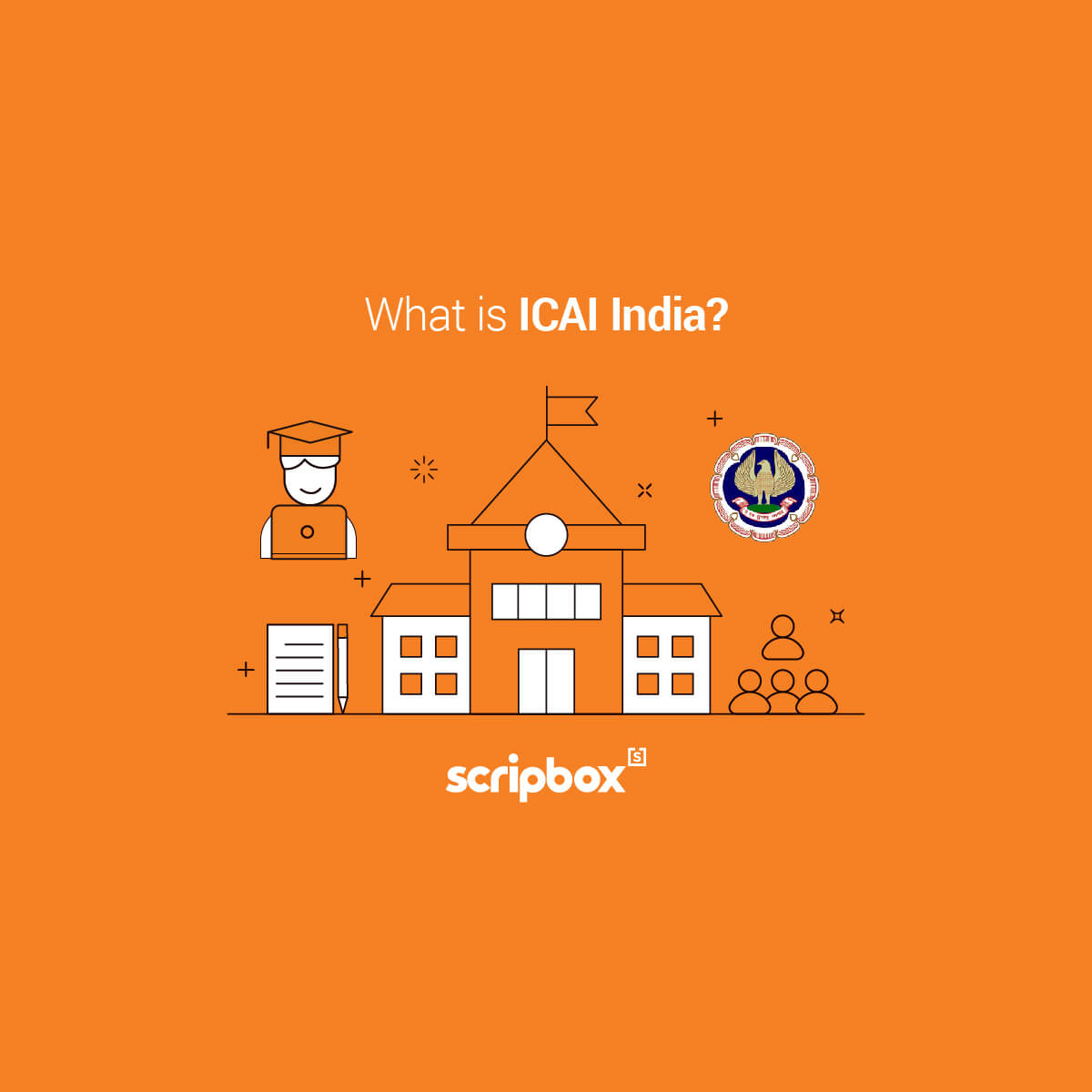What is Asset Allocation Fund?
Asset Allocation funds are balanced funds that invest in a mix of asset classes. These asset classes can be equity, debt, equity derivatives, real estate, commodities, etc. The fund portfolio is spread across more than one asset class on the basis of the investment objective. The fund manager determines the asset allocation for the fund. Also, they actively monitor the investments and rebalance the portfolio based on the market conditions to keep it in line with the investment objective. Moreover, the strategy is developed to maximise the returns for the investors.
Allocating the same investment across different asset classes helps you earn returns by minimising risk. However, how much to invest in each asset class to achieve the risk-reward is known as asset allocation. Therefore, the fund manager plays a vital role in asset allocation funds. They will allocate investments in these asset classes based on how the economy and markets perform.
Among all the asset classes, equities are the highest return generating asset class and entail the highest degree of risk. On the contrary, bonds and money market instruments are low-risk, low-return investments. You can plan your exposure to these asset classes based on your risk tolerance levels and investment horizon.
Best Asset Allocation Funds to Invest in 2025
| Fund Name | AUM in Crores | 3Y Returns | SIP Minimum |
| ICICI Prudential Asset Allocator Fund | 17660 Cr | 12.7% | 1000 |
| DSP Dynamic Asset Allocation Fund | 4433 Cr | 7.6% | 1000 |
| SBI Dynamic Asset Allocation Fund | 644 Cr | 6.9% | 1000 |
| Franklin India Dynamic Asset Allocation Fund | 1097 Cr | 17.5% | 1000 |
| HDFC Dynamic Asset Allocation Fund | 49709 Cr | 11.9% | 1000 |
Types of Asset Allocation Funds
- Dynamic Asset Allocation Funds
- Static Asset Allocation Funds
- Target Date Funds
Dynamic Asset Allocation Funds
These Dynamic Asset Allocation Funds tend to change the proportion of assets in the fund investment portfolio based on the market conditions. This tendency helps investors cope with the changes and fluctuations in the market. Also, this ensures that the portfolio is aligned with the market performance. For instance, if a particular asset class is performing well, increasing the allocation towards this particular asset class will have a favourable impact on returns on the overall portfolio.
Static Asset Allocation Funds
These funds have a pre-fixed percentage of funds allocated to different asset classes. This percentage is decided at the beginning and maintained throughout. In other words, the investment remains static for each asset class. For instance, balanced funds are the most popular type of static funds, which invests at least 65% of their total assets in equities and the remaining in debt securities.
Target Date Funds
These funds manage a specific mix of asset classes with a high-risk reward concentration. The risk gradually reduces as it approaches the maturity date. Therefore, these funds are also known as life cycle funds. For instance, these funds are commonly used for retirement planning, where the safety of capital is prioritised while decreasing the risk appetite of investors nearing retirement.
Features of Asset Allocation Funds
The following are the features of asset allocation funds –
Optimal Returns
The objective of these funds is to provide optimal returns on investments to investors. It protects the invested capital through different strategies and tries to maximise the returns by timing the market.
Asset Class
Not all asset classes deliver the same performance. For instance, the recent Covid-19 crisis hit the stock market while the gold prices increased tremendously. This is because every asset class reacts to every market condition differently. Therefore, these funds ensure a proper asset mix in the portfolio which is revamped and aligned with the market performance.
Professional Management
An experienced fund manager professionally manages the fund portfolio. This relieves the investors from performing market analysis. Also, investors cannot keep a constant watch on the market and revise the portfolio to align with market behaviour. Therefore, fund managers know and understand asset behaviour towards market events.
Risk-Reward Trade-off
The asset allocation strategy ensures the risk return trade off for investors where they can receive maximum returns while reducing the risk simultaneously. A balance between the two ensures long term portfolio growth.
Benefits of Investing in Asset Allocation Funds
The following are the benefits of investing in asset allocation funds –
Diversification
Asset allocation funds ensure that investors can achieve their diversification objective through a single fund which helps them minimise their risk burden. This fund invests across different asset classes and expands its portfolio based on its needs. Therefore this fund benefits both inexperienced and seasoned investors.
Better Returns
These funds ensure that investors can receive returns from multiple asset classes. This improves the chances for better returns for investors. Moreover, all asset classes can’t perform in all situations. Any underperformance by one asset class can be covered by another.
Market Volatility
Any up or a downtrend of an asset class cannot sustain for long. Markets are volatile, and it influences the fund investment value. These funds are not too volatile as they invest in multiple asset classes. Though these funds don’t offer returns as high as that of a pure equity fund, their fall isn’t as down as an equity fund. This is because of their genuine diversification, which minimises the impact of volatility.
Taxation for Asset Allocation Funds
The taxation of asset allocation funds depends on the equity or debt asset class exposure. If the equity exposure is more than 65%, the taxation is like an equity mutual fund. Otherwise, it is taxed like a debt mutual fund. The following table shows the taxation of capital gains for asset allocation funds –
| Funds | Short Term Capital Gains (STCG) | Long Term Capital Gains (LTCG) |
| Equity oriented fund | Holding Period: less than 12 months Tax: at 15% flat in investor’s hands irrespective of the income tax slab rate. | Holding period: 12 months or more Tax: Capital gains up to Rs. 1 lakh are exempted. Above Rs. 1 lakh is taxable at 10% |
| Debt oriented Fund | Holding Period: less than 36 months Tax: The capital gains are added to the overall income and taxed as per the individual income tax slab rate. | Holding Period: 36 months or more Tax: Capital gains are taxable at 20% with indexation. |
Note: As per the Finance Bill 2023, from April 1st 2023, capital gains from investments in debt mutual funds are taxable as per the investor’s income tax slab rate.
Limitations of Investing in Asset Allocation Funds
Risk
Even though diversification plays a key role in these funds. Every asset class has its own risk. Equity funds carry market risk, debt funds carry interest rate risk, and gold prices fluctuate. If the fund invests in real estate, it has liquidity risk. Therefore, the fund manager must consider all these factors and create a balanced portfolio.
Cost
Frequent portfolio rebalancing can be a costly affair with high transaction costs. The acquisition costs of an asset are not cheap. Also, frequent buying and selling can have an overall impact on returns.
Active Management
This fund demands active portfolio management and rebalancing from the fund manager. Also, it requires them to do extensive research and strategise the buying and selling. Therefore, the fund manager must dedicate considerable time to asset allocation funds.
Who Should Invest in Asset Allocation Funds?
The diversification feature of asset allocation funds makes them a good investment for investors with low-risk tolerance levels. These funds aim to achieve the risk-return trade-off by investing in different asset classes. This fund is suitable for investors who are looking for stable and consistent returns from their investments.
Investing in asset allocation funds provides diversification to investors. The equity portion helps beat the effects of inflation while other asset classes cushion the risks associated with equities. Therefore, it evens out the risk of investing in just one type of asset class. Furthermore, investors who have a relatively riskier portion in their portfolio can consider investing in these funds to reduce risk without compromising returns.
Moreover, the ability to generate optimal ROI while keeping the risks low makes it a suitable investment opportunity for many investors. However, investors must check the portfolio of these funds before investing in them.
Things To Consider Before Investing
The following are things to consider before investing in asset allocation funds –
Portfolio Diversification
The asset allocation fund invests in different asset classes per the investment mandate. This means that the investor gets exposure to different asset classes by investing in a single scheme. However, the minimum limit of every asset may vary depending on the type of scheme. Therefore, investors must carefully go through the scheme-related documents before investing.
Investment Objective
Every investor must create a well-diversified portfolio based on their future financial goals. Although this fund provides a diversified investment portfolio, it may not always serve the purpose for the individual investor as it might not be in line with their financial objectives. Therefore, you should invest in funds keeping in mind your investment objectives over a period of time.
Fund Manager
The fund manager plays a crucial role in this scheme as the investing style varies. For instance, a fund manager might invest 65% of its corpus in equity in the case of a balanced fund. Hence, the fund manager can choose stocks from any sector or market capitalisation. Usually, funds declare these aspects in the scheme related documents. Therefore, the investor needs to check the fund’s past track record and the fund manager before investing.
Fund returns
Investors have to invest in these funds for a longer duration to earn significant returns. Since this fund invests in multiple asset classes, investors have to be patient and not worry about the short term market fluctuations.
Investment costs
Mutual funds have certain costs associated with them, which are in the form of the expense ratio and exit load. The expense ratio includes the fund management costs, transaction costs, etc., which are charged by the investors through NAV. Thus, this reduces the overall profit for the investors. On the other hand, exit load is a charge that the fund house deducts when the investor exits the fund before the stipulated time. Therefore, investors must check that expenses ratios are not too high while investing in this fund.
Financial Ratios
There are many financial ratios that you can use to evaluate the performance and compare the mutual funds. These financial ratios help to measure the performance of the fund against the index, risk of the fund, the trading activity in the fund, deviation of the fund return from its benchmark and much more. It would be best to consider some of the ratios while investing like alpha, beta, standard deviation, Sharpe ratio, portfolio turnover ratio, rolling returns, r-squared, etc.
Conclusion
Asset allocation funds can be a good addition to the investor’s portfolio if the scheme is selected carefully. However, investing in this scheme cannot be the only alternative to diversifying a portfolio. You should invest in different asset classes to build a well-designed portfolio that aligns with your financial goals and risk profile. Overall, asset allocation funds can help you during dynamic market movements and their effect on different asset classes.
Discover More
- Sharpe Ratio in Mutual Funds
- Rolling Returns
- Debt Mutual Funds
- Real Estate Mutual Funds
- Hybrid Mutual Funds
- Emerging Market Funds
- What is Asset Allocation Fund?
- Best Asset Allocation Funds to Invest in 2025
- Types of Asset Allocation Funds
- Features of Asset Allocation Funds
- Benefits of Investing in Asset Allocation Funds
- Taxation for Asset Allocation Funds
- Limitations of Investing in Asset Allocation Funds
- Who Should Invest in Asset Allocation Funds?
- Things To Consider Before Investing
- Conclusion























Show comments